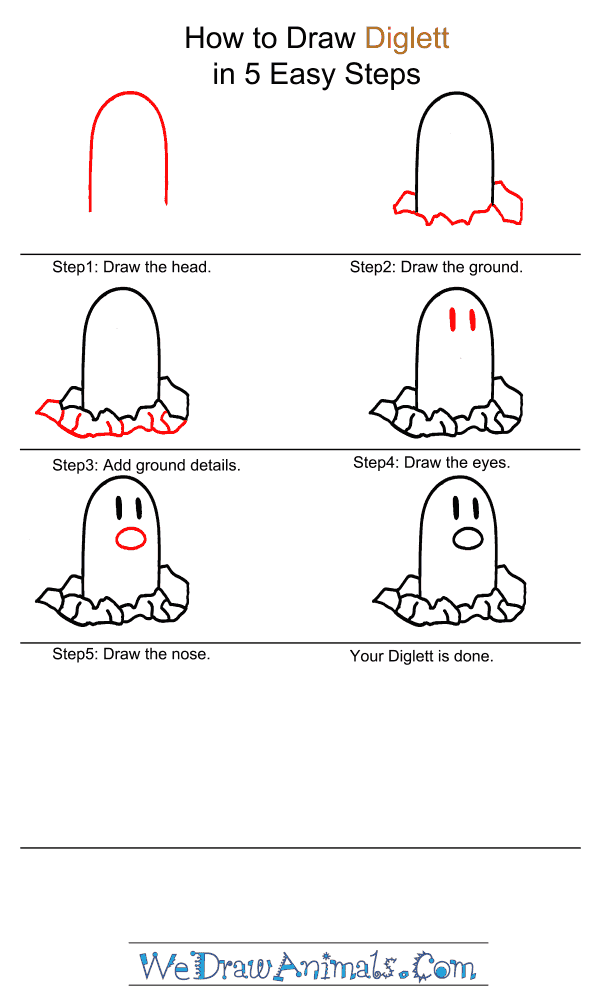In this quick tutorial you'll learn how to draw Diglett in 5 easy steps - great for kids and novice artists.
The images above represent how your finished drawing is going to look and the steps involved.
Below are the individual steps - you can click on each one for a High Resolution printable PDF version.
At the bottom you can read some interesting facts about the Diglett.
Make sure you also check out any of the hundreds of drawing tutorials grouped by category.
How to Draw Diglett - Step-by-Step Tutorial
Step 1:
Step 2:
Step 3:
Step 4:
Step 5:
Interesting Facts about the Diglett
This ground-type Pokemon is the predecessor of Dugtrio, and is one of two variants of this Pokemon. There is a second “type” of Digglett that appears in the Alola region. The Alolan Digglett is a ground-steel type of Pokemon, who have fine hairs on the tops of their heads that they use to communicate with one another. Both variants of this Pokemon are small, always seeming to be buried in the ground itself, with brown bodies, big pink noses and beady eyes. Diggletts prefer to be underground, as their very thin skin is sensitive to the light of the sun. Long-term exposure can make them feel very sick, heating up their blood. They feed on tree roots that they gain access to while digging tunnels beneath the surface of the Earth.
Did you know?
- ?
- A lot of people don’t like to fight Digglett Pokemon because they are useful creatures. They disperse seeds and help the environment by doing so.
- The Digglett’s real size remains unknown, but about eight inches of its body sticks out of the ground when it does bother to emerge from underground.
- When a Digglett digs through an area, it makes the soil perfect for gardening and planting crops. It is because of this reason that most of this Pokemon are raised in farms.
- They live about one yard, three feet, underground.
Arts and Crafts Activity Notes: You’re going to need sand and water for this activity. On a table or in a large, wide container with raised edges that will keep the sand in, dump sand and add water. Have each participant make their Digglett out of sand, digging small paths behind them to show where the Digglett is coming from. Whenever you want to revisit this activity, just add more water If the sand starts to dry out.






